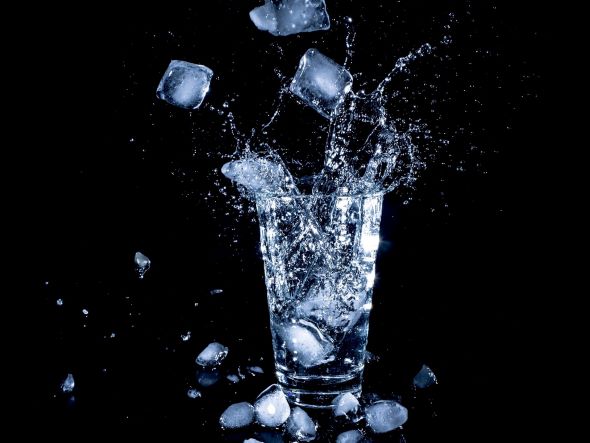
The Top 5 Electrolyte Hydration Myths
In this article, we shall look into some myths that revolve around and affect our beliefs in hydration and electrolytes.
Whether you enjoy drinking it or not, water and electrolyte water is essential for maintaining healthy bodily processes.
Water is essential for body functions, including digestion, blood flow, and vitamin absorption. It also gives you vital nutrients like calcium and magnesium and aids in keeping you hydrated.
Electrolyte-infused water is rich in electrolytes like sodium and potassium. They support the maintenance of the acid-alkaline balance, the control of physiological fluids, and the enhancement of cardiovascular and muscular health.
Both athletes and other active individuals are increasingly drinking water infused with electrolytes. However, there’s a lot more noise than truth when it comes to electrolyte hydration.
In this article, we shall look into some myths that revolve around and affect our beliefs in hydration and electrolytes.
Myths Busted
Below are some major myths about electrolyte hydration that people commonly follow. Social media influencers and sports drink companies propagate most of these myths as a sales strategy or fitness content.
Keep reading to inform yourself with the right ideas about electrolyte hydration:
Myth 1: You Cannot Exercise Without Electrolyte Drinks
Fact:
When you’re exercising, you could be told that you inevitably need sports drinks and hydration to replenish your salt and electrolytes (such as potassium and chloride). But consuming sports beverages like Gatorade will help you avoid having to do that.
Salt can be found in different foods and beverages. Similar to thirst, you may rely on your body to let you know how much it needs.
According to research, ultramarathon runners may control their salt balance by listening to their hunger and thirst.
Salty foods, including pickles, salted watermelon, and salt sachets, were provided by the marathon organizers, who advised the runners to only consume what they were craving.
Let your desires be your guide. Your body will let you know when it has a yearning for salt.
Myth 2: Drinking Too Much Water Can Cause Electrolyte Imbalance
Fact:
The four main substances that make up the body are water, minerals, vitamins, and lipids. Our meals and beverages include these ingredients in variable levels. Electrolytes are the components of these systems in equilibrium.
Effectively operating the body’s organs, muscles, and nervous system depends on electrolytes.
Our bodies become dehydrated when we eat too much salt or sugar or when we don’t drink enough water. Our kidneys eliminate extra fluid from our bodies to maintain adequate hydration levels when we get dehydrated.
Dehydration and electrolyte abnormalities can result from a lack of fluid in the bloodstream. While nausea, vomiting, and diarrhoea are signs of an electrolyte imbalance, headaches, muscle cramps, and fatigue are signs of dehydration.
If these symptoms are severe enough, they may require medical attention from a doctor or nurse practitioner who has received training in diagnosing electrolyte imbalances.
Myth 3: Darker Urine Suggests Dehydration
Fact:
Urine contains salt and other solids, which gives pee its darker colour, and scientists frequently use these solids to determine how dehydrated a person is.
However, there are more accurate approaches to determining if someone needs additional water.
According to studies, athletes who had their blood collected while peeing into a cup did not seem thirsty when their urine was quantified.
Your urine’s colour does not indicate that you are dehydrated; rather, it means that your kidneys aren’t releasing as much water as they should to maintain a healthy balance of salt and water in your blood.
Looking at the amount of salt in our blood would be more accurate since our brain uses that concentration to determine how much water we need to drink.
However, suppose you have trouble recognizing when you’re thirsty. In that case, some hydration specialists advise consuming enough water to maintain your urine a pale, straw-yellow color, which may be a quick indicator of hydration.
Myth 4: You Cannot Prepare Electrolyte Water At Home
Fact:
Oral rehydration solution (ORS), commonly known as electrolyte water, is something you may make at home with a few basic components and consume in controlled doses.
You need the following to create one litre of regular electrolyte water:
- 1 litre of pure drinking water.
- Six tablespoons of sugar.
- 1/2 a teaspoon of salt
Electrolyte water from salt and sugar lacks extraneous chemicals like tastes and artificial colours.
Add fruit liquids like lemon juice, pomegranate juice, berry juice, and coconut water to the water to boost the flavour and nutritional content.
Antioxidants in these juices aid the body’s detoxification process and lower the danger of dehydration.
Drink Electrolyte Water To Keep Your Fluids Healthy
During the activity, more fluids are needed to replace the water lost via sweat. Electrolytes, including sodium and potassium, as well as tiny amounts of calcium and magnesium, are found in sweat.
You can keep your body hydrated by replacing the electrolytes lost via sweat with electrolyte-enhanced water instead of tap water.
Avoiding outdoor activity and consuming enough fluids and electrolytes are essential for keeping your body cool in hot temperatures.
Dehydration, even mild dehydration, can impair cognitive function, attention, and alertness.







